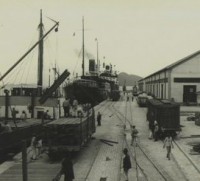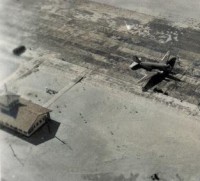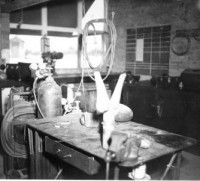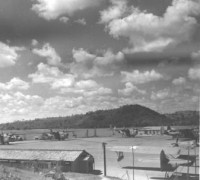U.S. NAVY BASES IN BRAZIL - U.S NAVY BASES
2)RADIO STATION SALINAS BAHIA
Building an Intercept Station During World War II
Joseph Horn
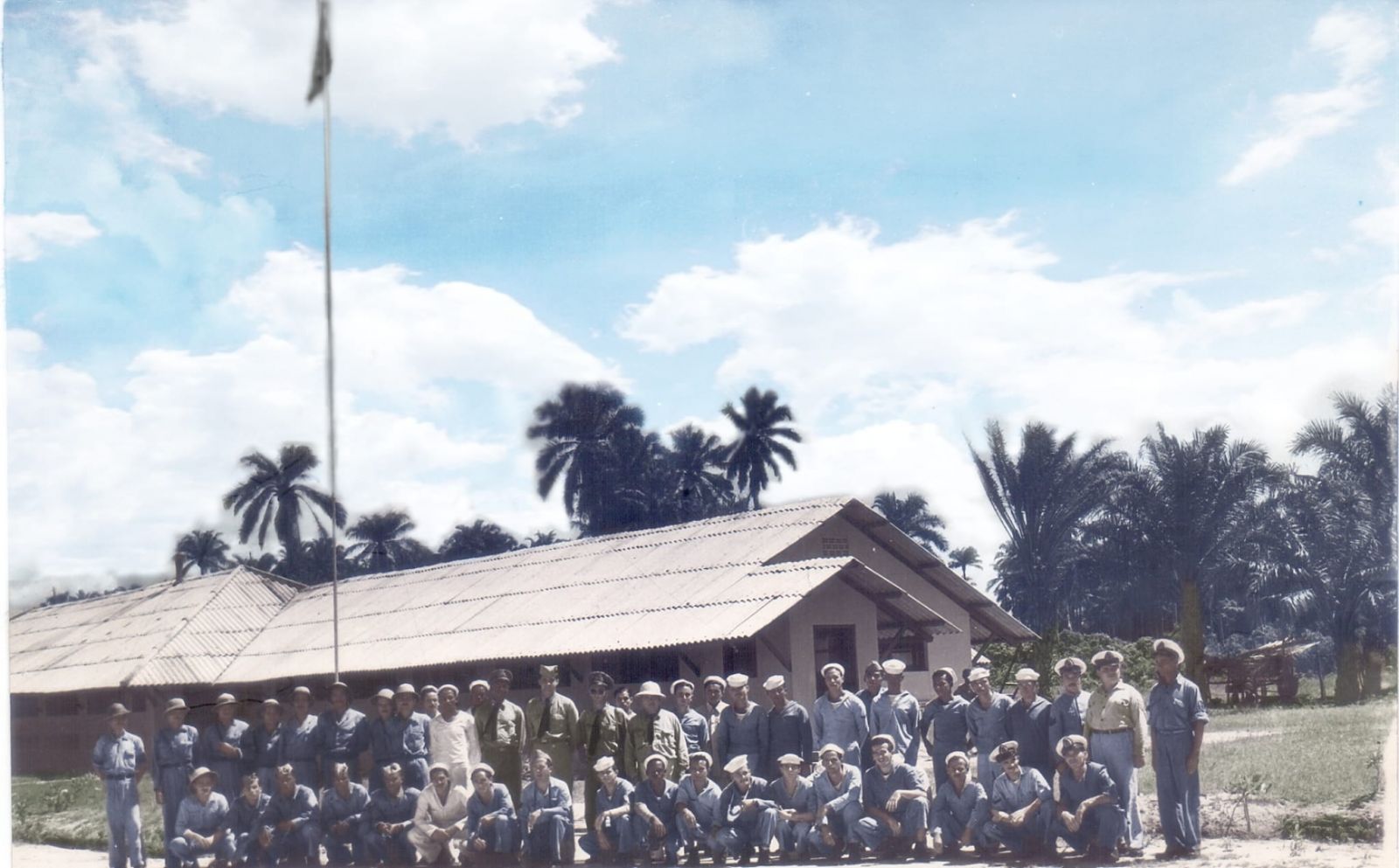
Above the panoramic view from main barracks already administered by Brazilian Navy circa 1947.
From the late fall of 1942 to the summer of 1943 eleven sailors and I were shipped from Noroton Heights Radio School, Connecticut, to German Morse school at Cheltenham, Maryland, then, to Oppelachia Airfield in Florida and on to Bahia.
That time I was very disappointed about the assignment because 1) I didn't know what was entailed, and 2) I had joined the Navy to go to sea and fight. Whether or not the assignment was proper, I have lived to tell about it. We were sent to Brazil to build an interceptation radio station at Salinas de Margarida-literally, to cut it out of the jungle. Salinas was to be the southern leg of a three station, intercept and HF DF net with control at Recife, Brazil, and the northern station at Belem on the Amazon River, a far cry from that of today.
It was about 15 feet long, mounted on a pivot with antennas at each end. The operator manually twisted the machine back and forth as many times as be could during the 20 or so seconds that a suspected enemy submarine transmitted. and forth rapidly enough to get a bearing. The DAB at
Communications were not very rapid in those days. Our only electrical communications were by manual Morse. We communicated by Morse within the OFF net for tip-off and reporting
(I do not think HF wave propagation predictions would have come up with that one.) Operating communications circuits was less demanding than operating an intercept position-you could always ask for a repeat if something were missed when communicating. The villagers had no electricity and no method of refrigeration. The natives were quite interested in our electric lights but did not like the sensation of cold produced by ice cubes. In this area the temperature, even in the wintertime, never went below 55-60 degrees and since these people had never experienced the feeling of cold, handling an ice cube, even briefly, caused them acute pain.
Our buildings at
Typically, it was: those A-F, standby for submarine duty, all those G-K, standby for cruiser duty, all those L-S, standby for destroyer duty, all those T-Z, standby for amphibious duty. With that kind of selection process, I have to wonder, still, how they arrived at calling Sheck, to be assigned to USN Station at
At Salinas, about 25 miles by water from the city of
The covert communications were intercepted by a Coast Guard unit which was stationed at
This sound made the cold chills run-I can still hear it occasionally. The DF equipment (DAB) was getting as many crosses as he could on the scope in order to estimate the direction. One had to be in fairly good physical condition to be able to twist the equipment back. Also, when communicating. You could ask the operator at the other end to slow down, to improve sending or, in a dire situation, to put another operator on the set.
In contrast to today's highly formatted procedures for intercepting manual Morse-with our main objective was to copy every dit and dah that the target sent. The format was incidental. In fact, we objected even when told that the date should be typed on the upper right hand corner of the page.
A lot more is expected of today's intercept operators: now the operator is expected to copy the target, do running traffic analysis and then tag everything for computer processing. The receivers we used were rather simple in design. One did not have to turn the BFO to change the pitch of a signal; you could just put your hand on the chassis.
If someone walked too close to your receiver, the pitch changed. Simplicity in the design of the receivers was a blessing in disguise because of the severe lack of spare parts. An essential part of maintenance training was learning how to repair a burned-out tube with a shot of high voltage. It worked, sometimes. For DF tip-off and reporting we used a tracking code, for administrative and operational traffic, one-time pads. Pencils with erasers were an important part of the inventory: we used them to push the paper strips back and forth on the board when enciphering traffic.
There were five of us that first went to Salinas de Margarida to build the station, with others arriving later to make a total crew of 21 Americans: 1 Officer in Charge, 2 machinist mates, 1 medic, 2 cooks, 1 Chief, 2 First Class and 12 Radiomen. This slow, tedious method of encipherment had its drawbacks but, in retrospect, it served as a great managerial tool in keeping electrical communications to a minimum.
One cannot but wonder what the reduction in our current electrical communications would be if the only available encipherment systems used manually manipulated paper, key strips. The German Navy operators sounded like machines. Towards the end of the war, however, there was a noticeable deterioration in the quality of their communications. On the other end of the spectrum, the Italians and Argentineans competed for qualifying as the poorest communicators.
It seems that the Officer in Charge was selected because he could speak Portuguese rather than for his managerial abilities. We hired laborers and skilled craftsmen from the local population of about 700 people. Until the barracks, power station and galley had been built, we lived on a small cabin cruiser that had brought us from
Their main occupations were fishing, pearl diving and working on salt beds. The religion was a mixture of Voodooism and Catholicism. It was customary to see a person in pagan dress on a Catholic holy day. There were no native doctors or dentists on
Some of the natives were very skilled craftsmen in woodworking although their tools were quite primitive. Logistics was a major problem at
You would be amazed at the improvisations that take place under these conditions. Did you ever see an entire movie backwards? By the end of the seven weeks, all the parts had been memorized by the sailors, including Lena Horne's, and one innovation was to turn the volume down and have the sailors take the speaking and singing parts.
Because of the lack of spare parts, the three vehicles (a weapons carrier, a jeep and a motor scooter), were often inoperative. I bought a beautiful quarter horse and a very ornate saddle for the total price of $75.00. Horse racing and rides through the jungle became enjoyable passtimes. When I had to go to the transmitter shack to change frequencies, it was usually by horseback.
If the fuel shortage continues, this kind of experience in traveling may prove useful. Mr Horn was sent to
.jpg)
Rare view of the Power House and water reservoir.
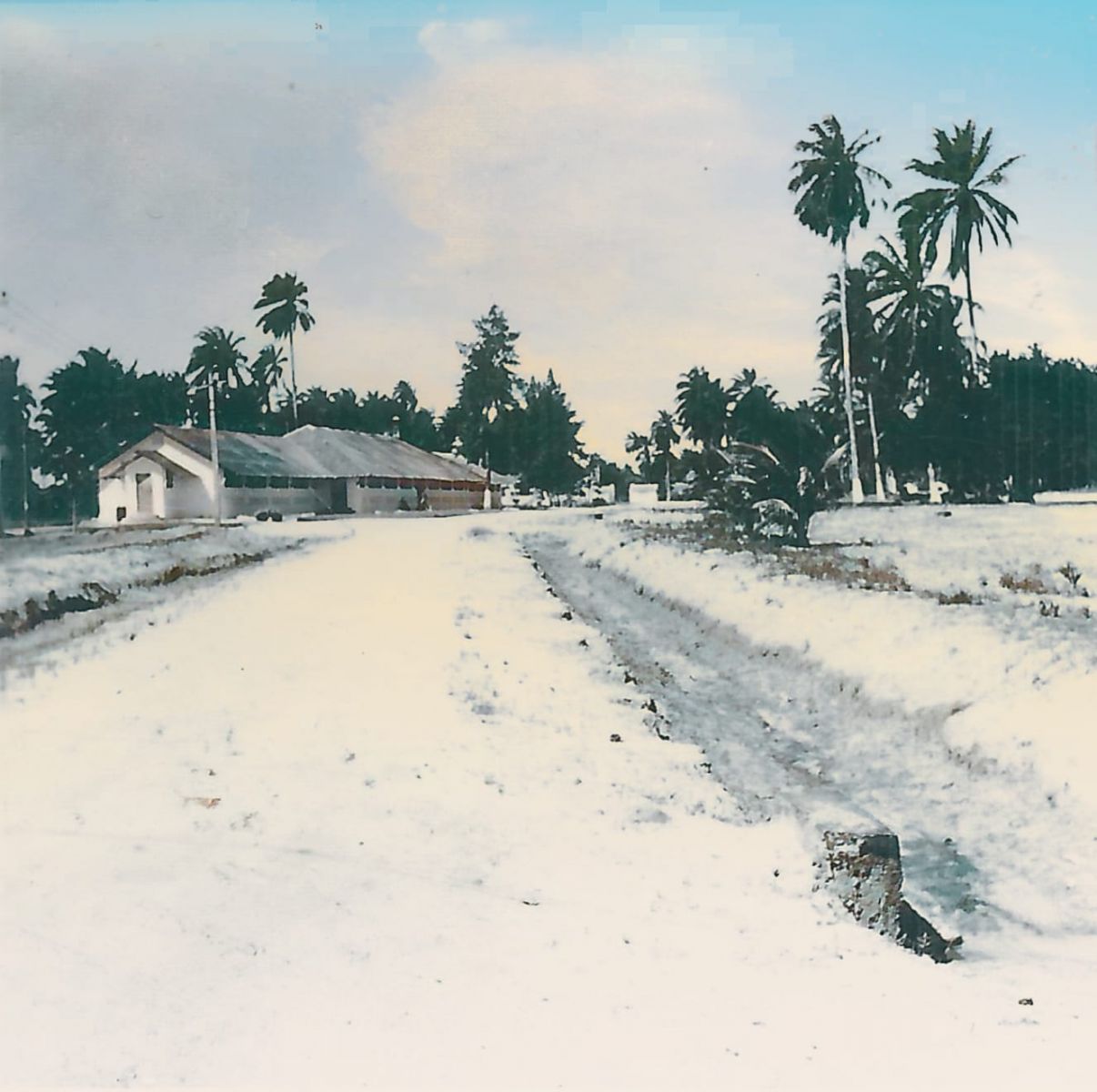
Above view from Barracks and Galley
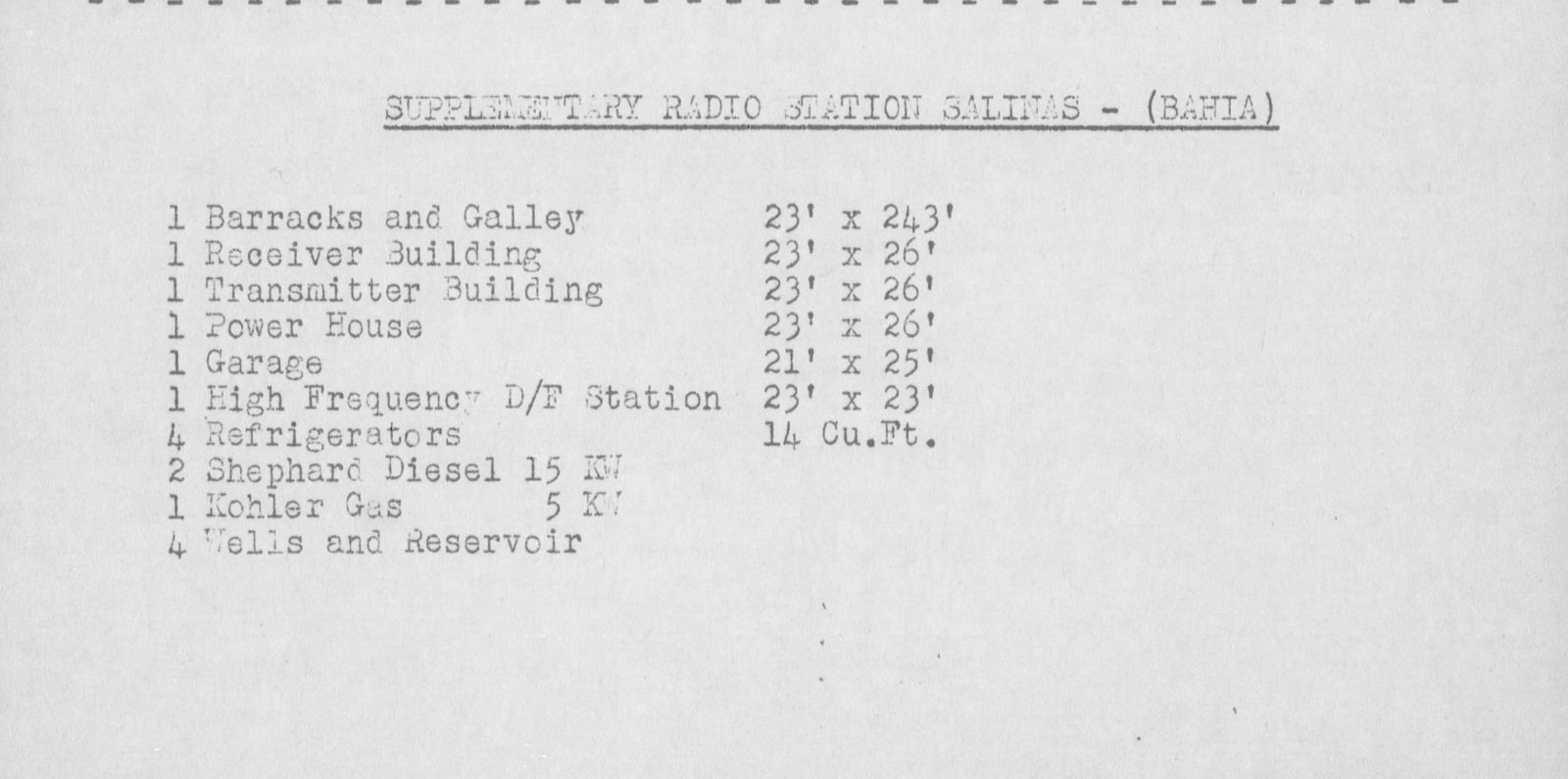
Copyright by By FOLD 3
